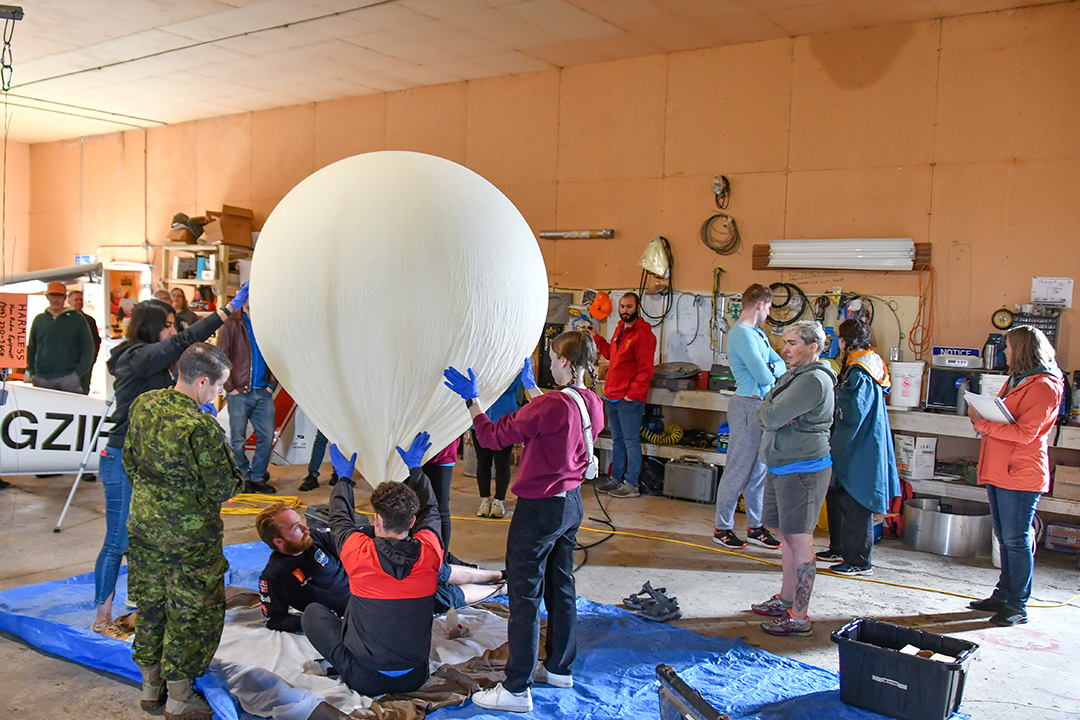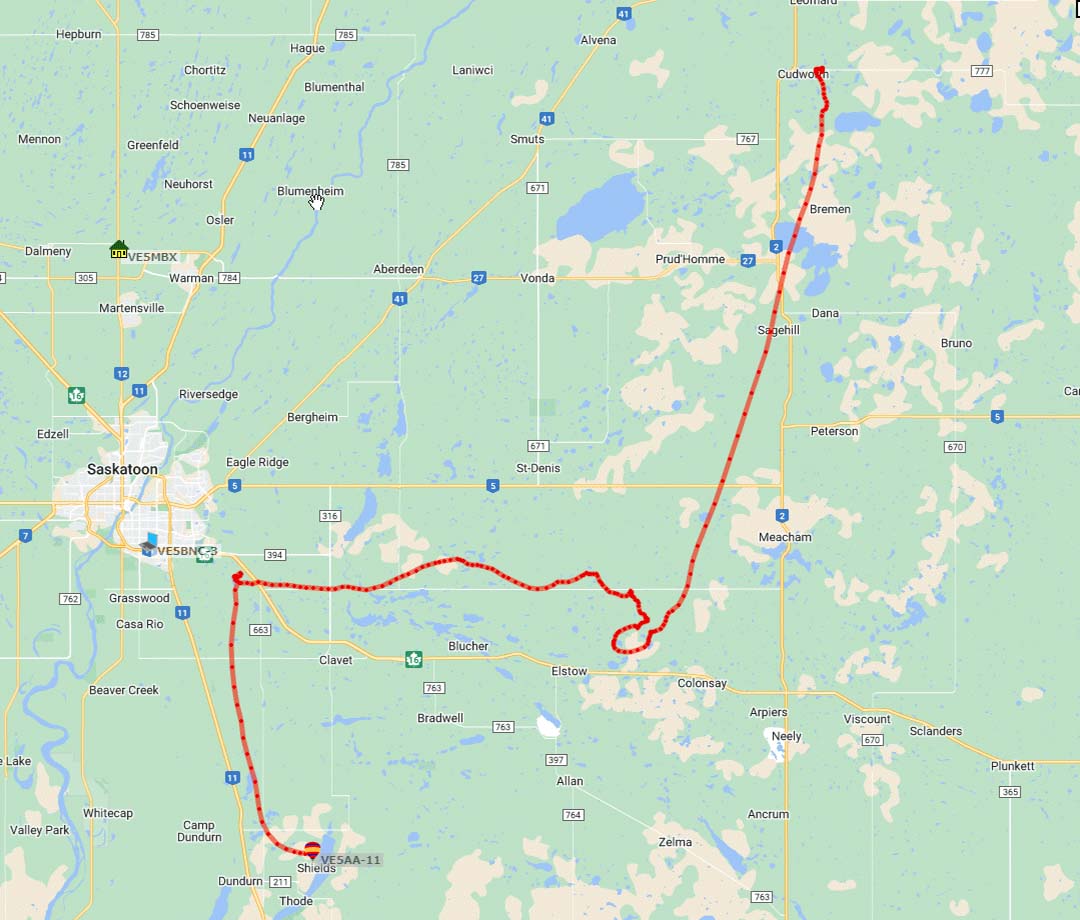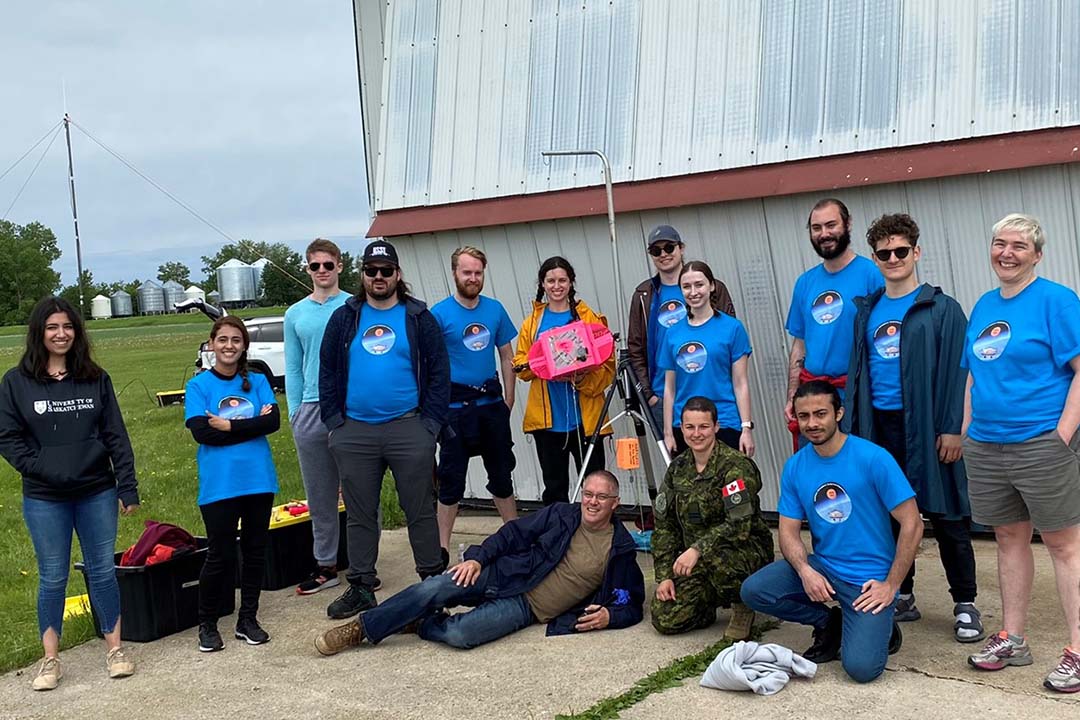
Q&A: USask students launch high-altitude balloon into near-space
A group of University of Saskatchewan (USask) students were part of an international team that launched a balloon 32.2 kilometres into near-space, from the Cudworth Airport area outside of Saskatoon.
By Victoria DinhThe launch, which took place on June 18, was part of the NSERC CREATE International Space Mission (ISM) Training Program. The program works to prepare future experts in space technology through the participation in projects that will contribute to a Canadian-led launch by 2025. The ISM team is led by Dr. Kathryn McWilliams (PhD), professor in the USask Department of Physics and Engineering Physics and principal investigator for the SuperDARN Canada.
Erik Stacey and Pouya Pourkarim were part of a team of 10 students participating in this year's launch.
The following answers have been edited for length and clarity.
Q: How did the balloon launch go?
Stacey: The balloon launch itself went smoothly. The flight time wound up being substantially longer than expected (approximately four hours, compared to an expected time of three). We were a little concerned it was going to land in Blackstrap Lake as it was coming down, however it wound up landing approximately 100 metres off a grid road just to the west of the lake. This made for an easy retrieval and the payload was recovered in much the same condition as we launched it, plus a little bit of dirt from the landing.
Pourkarim: We are pretty happy with our mission. Now that doesn’t mean that everything worked without any problems or complications, but that’s pretty much almost a part of these types of missions. We were able to have a successful launch and more importantly landing, which apparently is one of the most common failing parts in the previous years. We had also successfully integrated multiple sensors, cameras and radio telemetry with a ground station to our payload which apart from one sensor, everything appears to have worked nominally. We are still in the process of analyzing the data.

Q: What was the most challenging part leading up to the launch?
Stacey: The most challenging aspect of this project actually came far before the launch — it was the first two days. We were thrust into a room with a blank blackboard, nine other similarly clueless students, and a bunch of equipment and told to design and execute a high-altitude balloon mission within three weeks. We had to come to a conclusion on the science goals we wanted to address, everyone’s background and experience, and a plan to utilize both the technical strengths and personal interests of each team member to execute the balloon launch. It took us most of the first two days to do this and was the most stressful and uncertain part of the project.
Pourkarim: I think the most challenging part of our mission belonged to the software team. We aimed to have multiple data readings feeding to the on-board computer and also downlinking live to the ground station. Adding the risk mitigation procedures to them also added another level of complexity.
Q: What’s the most important thing this program has taught you?
Stacey: This program has not only afforded me some experience working in collaborative professional environments, but also with people of a variety of educational and research backgrounds spanning engineering to space physics to astronomy.
Pourkarim: The most important thing that I learned from this program is how different people can integrate and work towards a goal. In our team it was interesting to have people who are intrigued, but not experienced in a field, form groups with experienced people in that specific field and form a learning-working environment.

Q: Why did you want to get involved?
Stacey: This program appealed to me because it offered some interesting and unique courses. I would never have had the opportunity to do something like this balloon launch through a traditional graduate program focusing on observational astronomy.
Pourkarim: Progress in the space sector is an important personal goal for myself. After seeing the resources, in terms of personnel and components that this program offers, I was convinced that this program offers a really good chance to learn and work in the space sciences and engineering field.
Q: What would you tell other students considering this program?
Stacey: Through this program, I’ve had the pleasure of meeting and collaborating with many brilliant students from a variety of academic backgrounds, culminating in the construction and launch of a high-altitude balloon mission in Saskatoon. I’m very glad I chose this program over a traditional master’s program, and I’d suggest that anyone interested in space mission design and broadening their professional skill set do the same.
Pourkarim: If you are a student in a field that includes or is close to space sciences, or if you are a person interested in space, definitely reach out to the people in the program and enquire. This program offers a fantastic opportunity of learning, training, progressing, making connections, and gaining experience in this field.

